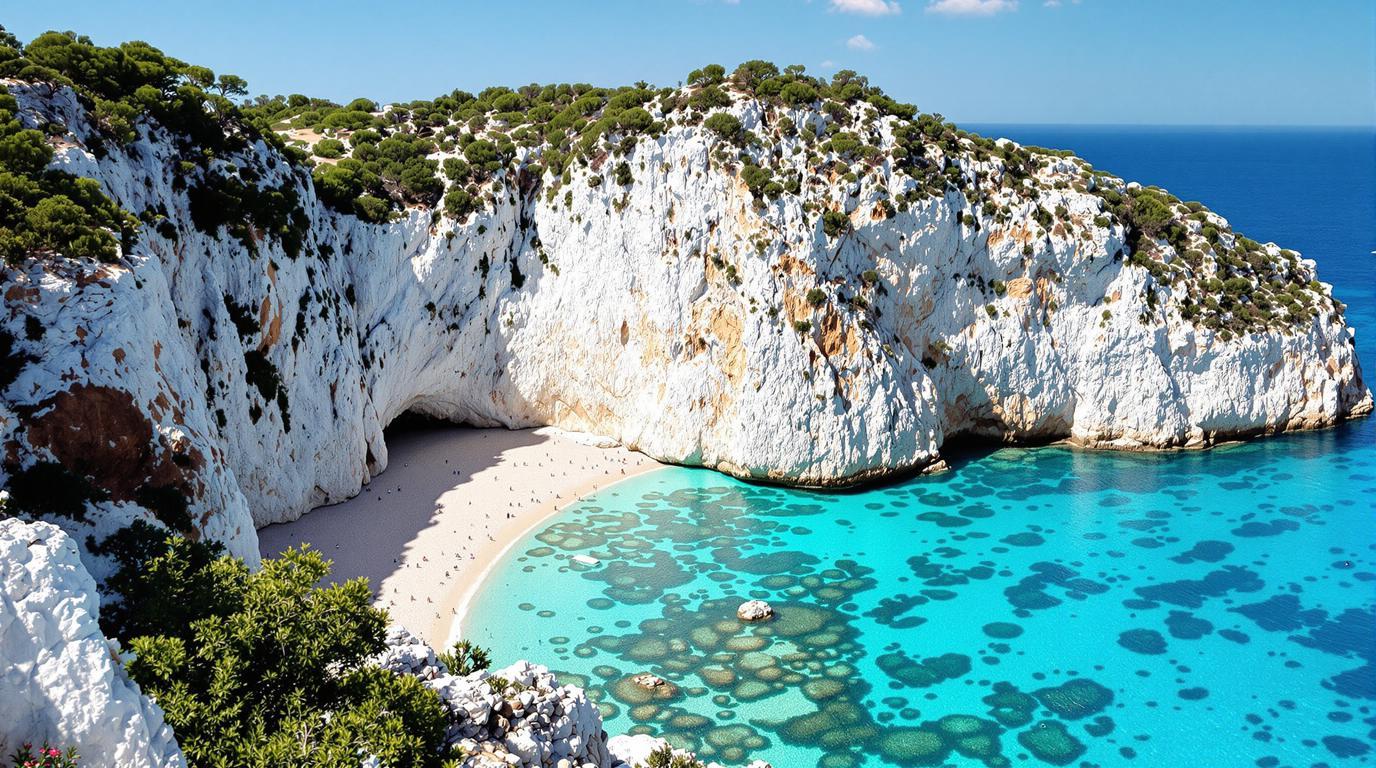# I Found Italy’s Most Secretive Island Chain Where Billionaires Hide (And You Can Visit for €20)
The limestone pops brilliant white against turquoise water as our small wooden boat rounds the southeastern tip of Corsica. “Most visitors never make it past Bonifacio’s cliffs,” whispers Matteo, our skipper, nodding toward a hidden cove ahead. “They miss Lavezzi’s magic.” He’s right. While tourists crowd Porto-Vecchio’s beaches, this protected archipelago—a scattering of granite islets where the Mediterranean meets rugged wilderness—remains Corsica’s best-kept secret, despite being accessible for the price of a decent lunch.
Îles Lavezzi exists in that rare space between discovery and overtourism. Designated a nature reserve in 1982, these uninhabited islands sit barely 10km from Bonifacio in the strait separating Corsica from Sardinia. Ancient mariners considered these waters treacherous—evidenced by the 1855 wreck of La Sémillante that claimed 773 lives. Today, that maritime history infuses the landscape with melancholy beauty, the small cemetery on Lavezzu Island standing as silent testament to the sea’s power.
“We call this place ‘u mare di i cursari’—the sea of corsairs,” explains Ghjuvan, a weathered Bonifacio fisherman I meet at the harbor. “For centuries, only smugglers and pirates knew these hidden passages between the rocks. Now we share them, but carefully.” That caution has preserved what makes Lavezzi extraordinary: crystalline waters teeming with fish darting between massive granite boulders sculpted by wind and waves into fantastical shapes reminiscent of hidden Mediterranean islands that retain their pristine character.
The best approach to Lavezzi begins at Cala di Paraguano, where shell-strewn sand gives way to shallow pools perfect for novice snorkelers. Swim 50 meters offshore and the seabed transforms—Neptune grass meadows shelter seahorses and wrasse in an underwater landscape more typically associated with world-famous tropical paradises with much steeper price tags. I follow a narrow path inland, where wild herbs release their scent with each footfall. The trail leads to Cala di l’Achiarinu, a horseshoe bay where the granite is polished smooth by centuries of storms, creating natural recliners that warm your body after swimming.
Unlike Sardinia’s Costa Smeralda where yachts compete for attention, Lavezzi’s appeal lies in its unvarnished authenticity. Near the island’s highest point—a modest 40 meters—I discover ancient shepherds’ huts constructed from stacked stone without mortar, evidence of the resourcefulness that defines traditional Corsican culture. These islands, despite proximity to Mediterranean villages offering Italian glamour at a fraction of the cost, maintain their own distinct character—more wild than polished, more contemplative than social.
Hunger eventually drives me back to my picnic spot where a simple lunch of local lonzu (cured pork loin), brocciu cheese, and figs from Bonifacio’s morning market proves more satisfying than any resort meal. This culinary simplicity mirrors Lavezzi itself—unadorned yet extraordinary in its straightforward appeal.
Practicalities: Visit between May and late September when regular boats depart Bonifacio hourly (€20-30 roundtrip). Arrive early; the last return boat leaves at 5:30pm, stranding unprepared travelers. Bring water, food, and sun protection—there are no services on the islands. For accommodation, Hôtel Genovese in Bonifacio offers harbor views and easy access to morning departures. As I board the return boat, the evening light transforming the granite to rose-gold, I understand why billionaires and backpackers alike guard Lavezzi’s secrets with equal devotion.
